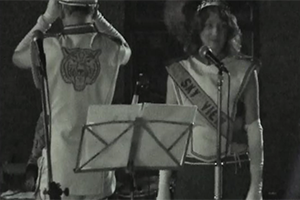Hat & Wig
Katharine Meynell
2018, 10mins
An informal portrait of fluxus artist Geoffrey Hendricks & arts activist Sur Rodney Sur, featuring Minette’s hat and Candy Darling’s wig.

Elizabeth
Katharine Meynell
2016-17, 23mins
Elizabeth concerns the life and work of typographer Elizabeth Friedlander, the only woman of her generation to have designed a Western typeface. The film takes an essay form, describing what is known of her life, using archive footage interspersed with landscape and speculative images and text, probing the practical and political life of women surviving on wit and skill in early twentieth century Europe
“I liked it very much indeed - cinematically and in terms of its subject matter … Elizabeth’s roots in German modernism, her exile, the familiarity of her anonymous designs” Laura Mulvey.
Shown at Glasgow School of Art; Close-up Cinema; Blow-up Film Festival, Chicago; Essay Film Festival Birkbeck Cinema; Kane Auditorium, University College Cork; The Ditchling Museum of Arts and Crafts (installed January – April 2018).
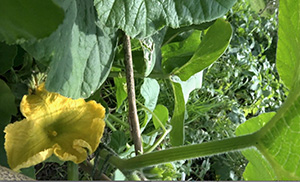
Veg movie
Katharine Meynell
2017, 1min
Meandering across the vegetable bed
Shown at One minutes at Art Projects Film Programme at The London Art Fair, January Harrington Mill Studio Gallery, Long Eaton, Nottingham.
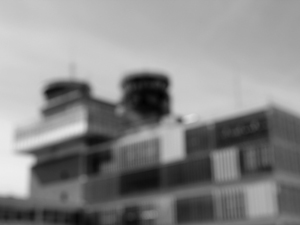
The Painting
Katharine Meynell
2014, 14mins
The scene within an unknown painting is the location for an obsessional affair.
Referencing early work of Marker and Renais and playing with interaction with others and technology, it forms a fragile and distributed memory.
Shown at Sunless, Bermondsey Project Gallery; Enclave, Deptford
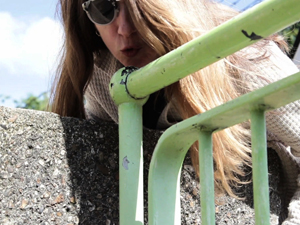
Kissing
Katharine Meynell
2014, 3mins
Made in response to a word drawn from a hat with LUX 13 Critical Forum, I kissed the iconic Balfron Tower.
Shown at Arcadia Missa London; Millenium Mew York; Sonar Cinema, Solent University; Trinity Laban, Creekside; Material Soup Castlefield Manchester; Fábrica Braço de Prata's "Sala Visconti" Lisbon; Night Light, Liverpool; Directors Lounge 48 Stunden Neukölln, Berlin
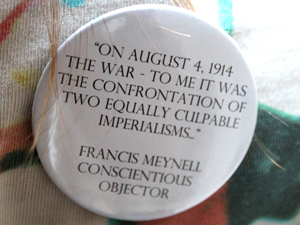
WW1 Conscientious Objectors Day
Katharine Meynell
2014, 1mins
Celebrating the bravery of the First World War conscientious objectors in Tavistock Square, London.
Shown at Furtherfield Gallery, Plymouth Art Centre, Rougue Artists Studios and Project Space, Manchester, Ginsberg Film Festival, Steve Biko Centre, South Africa, Chester Film Coop, blocprojects, Sheffield, Galeria Sztuki, Gdansk Poland; Sleepwalkers International Short Film Festival at The Baltic Film and Media School, Estonia, The Beecroft Gallery, Southend
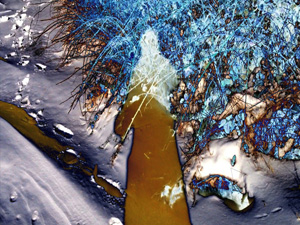
Sun - solarise
Katharine Meynell
2013, 1mins
A walk in the snow across the South Downs on a bright day with long, deep shadows, is experienced as ‘emotional fx’: eliding the actual sunlit landscape with the solarisation of the image. The stuff of technology and stuff of the world.
Shown at Furtherfield Gallery, Finsbury Park, January/February, Art Writing in Aarhus, Denmark; Visual Arts Centre, Scunthorpe
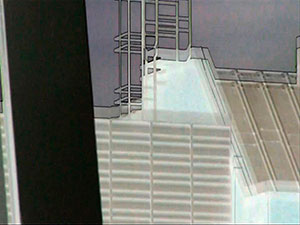
New words for this summer
Katharine Meynell
2012, 2mins
Revisiting the personal as political, thoughts on the gendered body are explored against a backdrop of Renzo Piano’s ‘Shard’ as a visual trope, in positive, negative and reflective puddles
Shown at Furtherfield Gallery, Finsbury Park, January/February 2013; Visual Arts Centre, Scunthorpe 2013, Aid and Abet October/November 2012, The Museum of Club Culture, Hull; September 2012, One day Wonder[ment] Alexandra Park, Manchester; London Underground Film, September; The Horse Hospital, Colonnade, Bloomsbury, London, WC1; The 10th Hull International Short Film Festival (GLIMMER) in October 2012
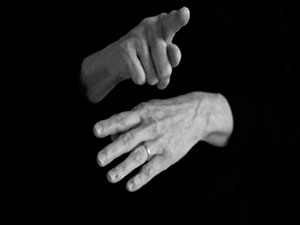
Toulon 1926?
Katharine Meynell
2012, 6mins
A video transcribing a picture attributed to Paul Nash, influenced by De Chirico. A painterly analysis of the surface for brush marks, pigments and geometry typical of Euston Road painters, is combined with an historical and geographical trawl from my grandmother’s Baedeker and on-line trip advisor. This attempts to identify a precise view from the hotel window. All of this is described in words and gesture, drawing an historical and material narrative from the original, on a picture plane suggested by narrow depth of field.
Shown in Dead Original at Five Years, London
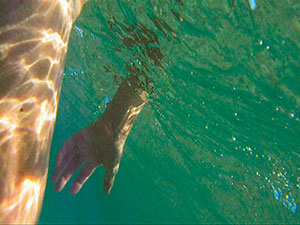
Wading in the water
Katharine Meynell
2012, 1min
On holiday I found myself in a barren ocean. Underwater footage slowed with gurgling soundtrack shows glimpses of legs and seaweed; prefaced by a map of Europe showing the proportion of fish stocks within biologically safe limits, and the postscript (fished beyond sustainable yield) South Crete.
Shown at Aid and Abet, Cambridge; Horse Hospital as part of London Underground Film Sessions; Peloton, Sydney, Australia, 24 Nov –17 December, Vertical Cinema, Gwdihw, Cardiff; Cultural Olympics, Weymouth August 2012
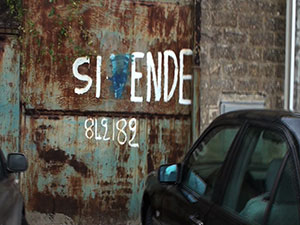
Tunny
Katharine Meynell
2010, 5mins
Video footage takes a moody view of a southern most tip of Europe, where fishing has been the mainstay of the economy since Neolithic times. Now over fished and with waves of unwanted poverty stricken hopefuls coming in from the south, Portopalo di Capo Passero, provides a visual context for thought. Shot on a hand held camera in the rain, every effort has been made to allow the material processes to remain apparent.
Shown as part of Iceberg Bread Tunny in ‘From Floor to Sky’ curated by Peter Kardia at P3 London
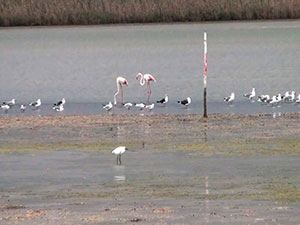
Pretty Flamingo
Katharine Meynell
2010, 1min
Takes images from the salt flats in the Vendicari Nature Reserve where flamingos feed, interspersed with a pulsating pink, accompanied by the 1960’s song, which observes a woman as ‘just like a pretty flamingo’. The flamingos here are the normal skinny legged and big-bodied birds, but their legs are moving as if beating time to the music.
Shown at Moors Bar, Crouch End, London; Meinblau, Berlin; Contemporary Art Ruhr, Germany; S1 Artspace Sheffield; Big Screen, Liverpool and Manchester; Kinofest, National Museum of Contemporary Art, Bucharest, Romania; Stew Gallery, Norwich; Museum of Club Culture, Hull.
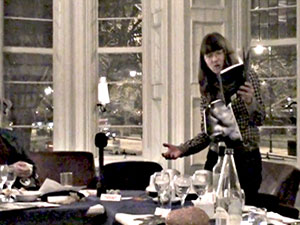
SCUM Manifesto with drum machine
Katharine Meynell
2010, 3mins
Documentation from Subjectivities and Feminisms Research Group
Setting a backbeat on the drum machine, attaching a photo of Andy Warhol’s wounds to my chest, I declaimed loudly. A triangle was slung low on my belt in front of my pudenda and a rubber balloon hooter was tied in at my rear. Every now and then to emphasise a point I would drum, hoot or twang as relevant, accompanying my favourite pages from Valerie Solanas’ manifesto
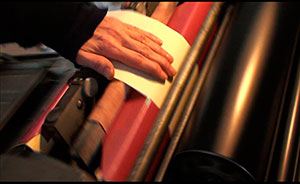
Printing Wollstonecraft
Katharine Meynell
2009, 2mins
This video observes the printing of a short piece of text "In fact it is a farce to call any being virtuous whose virtues do not result from the exercise of its own reason" which became the fragmentary start of the ‘Feminist fascicles’ project with Susan Johanknecht.
Shown at UK Big Screens, nationally over week 27th July, Marseille Project Gallery, Directors Lounge contemporary Art Ruhr Essen; Big Screen Hull, June & July; Live at the Apollo June; Hull School of Art & Design, foyer gallery October/November; The BAck doOR in Melbourne February, James Taylor Gallery, London
.jpg)
Night shoots
Katharine Meynell
2006-7, 2 screens 7mins looped
For 12 months I worked with a broken camera only recording in ‘nightshot’, making a serendipitous connection between dysfunction and surveillance.
Exhibited at the Fieldgate Gallery, London as part of ‘Analogue & Digital’ extracts from this became ‘night cooking’ and ‘night music’ for Kerry Baldry’s ‘One Minutes’ series
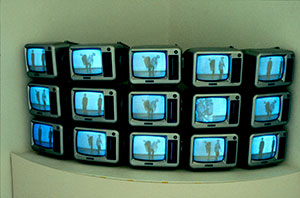
It's inside
Katharine Meynell
2005, instalation
It's Inside takes the representation and experience of disease as its central theme.
The involvement in this project is one which follows a conceptual tradition of art practice, where personal histories are not divided from the wider realm of social and aesthetic ideas, as 'the practice of everyday life', and the performative nature of our social relationships. A multi-media installation comprising projection, etched slates, cast medical instruments, a series of watercolours, cherries set in jelly,and the ‘caganer’ (Catalanian shitting figures).
The installation included Cell Persona performanced by Gary Stevens
Exhibition at the Café Gallery Southwark
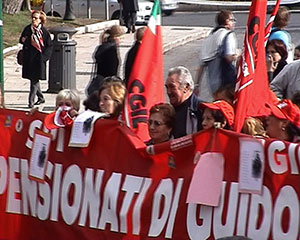
Rome Video: Can You Tell Me Where To Get Off?
Katharine Meynell
2003, 18mins
Made during an Abbey fellowship at the British School in Rome, where I was mainly drawing. The video is shot in notebook/diary format, where quirky scenes are portrayed. These are unromantic views, of the Roman aqueduct where tramps sleep, dusty leftover props in Cinecitta and the football stadium full of fireworks and singing. It includes an anti-Berlusconi march, various foibles of the residents of BSR and a wider view of Rome that is a city of sound and street musicians.
It opens with a marble inscription, which I derived from the disclaimer found in a Rosselini film: “I fatte e personaggi di questa opera sono immaginari. Pertanto ogni identita con fatti e persone reali, viventi o defunte, e da ritenersi casuale.”
Exhibition at The British School in Rome
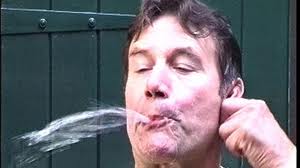
Hygiene Show
Katharine Meynell and Alistair Skinner
2002, Installation
The remake of the previous installation Light Water Power, for the Hygiene Show which focuses more clearly on clean water issues with bio-political implications and includes interview material with the scientist at L.S.H.T.M. Installation with 2 monitors.
Exhibition at the London School of Hygiene and Tropical Medicine
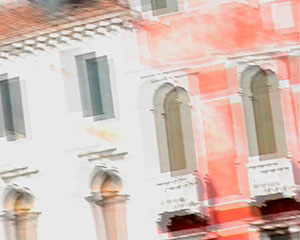
The Island Bell
Katharine Meynell
2001, 15mins 3 sources, looped installation
This is a single-screen video version of a work originally commissioned by Diffusion as an online publication for their ‘performance notation’ series.“Katharine Meynell's The Island Bell similarly plays with notions of framing, doubling and the notation of narrative. She makes a journey to an island where the bell of the tall red brick tower sounds plangently, but her tape-recording fails - it is on pause or the audio-limiter is on. She waits for the next Sunday when she is told the bell will toll, meanwhile she 'walked the laundry-hanging alleys and trod in the dog excrement'. Fully equipped with DAT recorder, still camera, notebook and pencil she returns to the island at the due time; the bell fails to ring. A colour photograph of the tower, which then becomes a double-page close-up, separates the two journeys; the physical proximity of the tower, its presence, is undermined by its silence, an absence.” Stephen Bury, Art Monthly The online book is available at www.diffusion.org.uk
Reading performed by Katharine Meynell and Alistair Skinner; Also 3 source version with 2 monitors and 1 projector.
Music composed and performed by Harvey Brough.
Exhibition ‘Digital Futures’ Harris Museum, Preston.
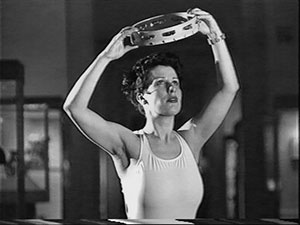
Attitudes 1-8
Katharine Meynell and Hayley Newman
1999, 8 sources and monitors, looped installation
Attitudes 1-8 with Hayley Newman, were made in reference to Emma Hamilton’s performances in Naples at the end of the eighteenth century. Performed in room 70, at the British Museum (Greek and Roman, where some of William Hamilton’s famous collection is housed) to give a formal context.
Writing on 16 March 1787 Goethe says of Hamilton “a few shawls give so much variety to her poses, gestures, expressions etc., that the spectator can hardly believe his eyes. He sees what thousands of artists would have liked to express, realised before him in movements and surprising transformations – standing, kneeling, sitting, reclining, serious, sad playful, ecstatic, contrite, alluring, threatening, anxious, one pose follows another without break. She knows how to arrange the folds of her veil to match each mood, and has a hundred ways of turning it into a headdress.. This much is certain: as a performance it’s like nothing you ever saw before in your life.”…
Exhibition at the Royal College of Art & Westminster University
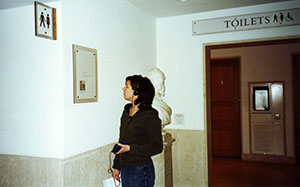
Story .
Katharine Meynell
1999, sound work
“Meynell’s Story, overwrites existing spaces with a web of new fictions made from old facts. The listener is caught somewhere between the real and the surreal where prosaic objects and locations are linked to fictional worlds.
Meynell took narrative as her starting point but, using a collage of historical and oral history form the NSA, constructed a cod guided tour of the library, in which she re-spun not simply the history of the library and its collection but also the geographical and political location of its inheritance.”
“Starting with a disclaimer - a letter to her audience telling us that she has made up a lot of what we are about to hear – Meynell directed users on an individual audio tour by providing instructions on a personal stereo. As each person followed the sound of her footsteps on the tape different voices and sounds interrupted the artist’s calm instruction to look at a painting, notice the quality of a stone façade. The ‘truth of an excerpt from the NSA oral history collection was contrasted with the pure fiction of Meynell’s retelling: artworks were misattributed, architectural detail was realigned. From the blatantly fictional (that there is a swimming pool, under the library, that King George 111 had a collection of porcelain dolls) to the more surreptitiously posed (that the library has a policy of collecting works by women), the tour poked fun at the use of historical fact to garner the assurity of history whilst at the same time making some clear political points (why does the library not have a policy of collecting work by women?). The tour passes by mock polaroid photographs (signaling a kind of currency unavailable to historical fact) which acted as visual puns and were placed politely on notice boards and other public points of use. Into this collage a series of quotidian testimonies seemed to undermine the pomp and circumstance of the library’s facade: Mrs Paul of Sommerstown who recorded details of the area of King’s Cross when it was small-pox infested slum; Germaine Greer on the practice of stealing plates from library books; the sound of a person in a wheelchair using the access facilites of the library. By making her audience aware of this surreality from the beginning of their tour, Meynell marked the gap between historical truth and experience. Her tour reconsiderd the user, implicating him or her in this space between such different narratives.” Andrea Phillips, 2000 on Spin
Exhibition ‘Spin’ a sound and live art event curated by Sarah Wang for the British Library.

Light Water Power
Katharine Meynell and Alistair Skinner
Founded by LFMC/ACE
1997, 6 sources, installation
Commissioned for the opening of the Lux building, we continued the theme of inputs and outputs, which seemed appropriate for a facility house and screening space, looking at layers of history and concealed structures that are present on a site. Drawing and mapping out electrical supplies and sewers etc. from the architect plans and extending them out, inventing a few from the street to gain access to the mains supply (via a friend who worked for Thames Water. We trashed a camera with the vibrations of the drills). And there was a further (fifth) source with fax machines, location shots, gas burning, plugs, cables and all sorts of inputs and outputs. Light Water Power was a wry take on Kurt Kren’s The Eating Drinking Shitting and Pissing Film which (although forewarned) caused institutional anxiety at LUX and was partially censored from public view.
“Light Water Power in the foyer of the new Lux cinema in Hoxton Square… Three monitors set into the floors of the foyer showed the slow progression from pierced tarmac to mess and muddle as council workers dug the proverbial hole in the road. The civic system of utilities is designed to facilitate the needs and digestive behaviours of the human animal. So within the dictates of their subject, Kate and Alistair chose to intersperse the maps and street scenes with playful images of related activities such as dialing a phone, switching the light on and taking a shit. They viewed the piece as a collective performance and invited spectators to join in by drinking water and excreting it into the public sewer system. All very hygienic, but the London Film-maker's Co-op who commissioned the piece didn't see it that way. The offending shit shot was relegated to the floor monitors while the acceptable images of a muddy hole in the road lost their conceptual edge by being projected onto the walls.” Catherine Elwes, Make
Exhibition Lux Foyer, London

Is This A Performance?
Katharine Meynell
1997, online work
Made as an online work in LEA digital laboratory, this considered boundaries of live and recorded action and (alleged) interaction, through a hypertext of narratives and musings.
This was available on the LEA website, but was lost with changing technology (I have an un-openable back up copy).
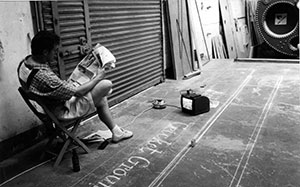
Water Work
Katharine Meynell and Alistair Skinner
1997, installation/performance with super8, video and light.
In a disused water pumping tower, backing into a reservoir, we spent the day reading newspapers, watching cricket on TV, drinking water and peeing into bottles, with signs on our backs saying “processing water”. Engineering plans of the utilities at Lords Cricket Ground were drawn out on the floor. There were various watery projections and an interview recorded with Alan Yorston, where he described how water is filtered and recycled up to seven times down the Thames Valley before it reaches the London taps.
Performed at The Castle, in Speckled Eye curated by Adrian George.

Fucking Tragic
Katharine Meynell
1996 6mins
A weeping nighttime monologue, melodramatically speaking to camera, it yo-yos between the naively embarrassing and the critically self-aware. This work combines the aesthetic of reality TV with Roland Barthes 'A Lovers Discourse.'
Shown at Gasworks in SAD.

The Living Room
Katharine Meynell (technical assistance from Darrel Vinner
1995, Installation using a rotating TV and a transmitter.
The Living Room offers a series of time frames perceptible through bits of audio track, -
the time-lapse footage of the television set, the sound of the room and rumble of the turntable recording of the screen, and the sound of the room in which the same turntable is rumbling in the present time of the viewer…I have attempted to represent 'woman' as historically marked and incomplete… in The Living Room, switching the gender or age of the protagonist.
Exhibition at Gasworks, London, ‘Join The Dots’, Salzburg, Austria & Whitechapel Open, London.

Paperbag Piece
Katharine Meynell
1995, Audio/Performance
A large brown paper bag in a space, attached to the end of the bag like an umbilical cord is a pair of headphones resting on a small child's chair a few feet away. The sound from inside the bag can be heard on the headphones. This is a work about inside and outside, interior and exterior, public and private.
The work takes place over two hours, preferably at a mealtime. The occupant of the bag remains concealed throughout. Two microphones are used, one to monitor internal body noises, heartbeat, stomach gurgle etc. the other to monitor food noises. Food is eaten, fizzy drinks consumed, and books read, the paper bag rustles, and moves with the body inside.
The ‘audience’ sits on a small chair and has the internal noises from the bag available on the headphones.
Performed at the Chocolate Factory
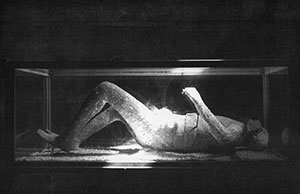
Wet and Dry
Katharine Meynell
1995, Installation, three glazed holes, light box, 1 monitor.
In the first is a duratrans photograph of a man encased in larva in a glass box, this is taken at Pompeii, the man, encapsulated at the moment of death is unchanged through time. In the second is a glass of water and a pumice stone (elements of the first and third). In the third a close-up shot of a man masturbating (suggesting another loss of time – within an internal space of the physical moment). Over this image is a text from Saint Augustine:
“For we know, O Lord, that the extent to which something once was, but no longer is, is the measure of its death; and the extent to which something once was not, but now is, is the measure of the beginning.”
Exhibition at Gasworks, London and ‘Join The Dots’, Salzburg, Austria

Noumos
Katharine Meynell
1995, 20mins
Numous considers the nomadic, the blurring of borders and states of identity and location. It uses the body to explore the intersection between the temporal and spatial.
Performances by Katherine Meynell and Hannah Kates Morgan.
The audio track uses recordings made at a philosophy conference at Warwick University with comments from Sadie Plant, Manuel de Landa, Orlan and Stelarc
Music composed by Jocelyn Pook.
Shown at Pandemonium, ICA

Lost & Found and Woman in Landscape, Technology of War
Katharine Meynell
1994, Installations
‘A projected video image of the artist, barefoot and brazen in a virginal white dress stands 'holding up' an actual recess in the wall. Inside, a real pair of red girl's shoes sit timidly immobile, heavy with nostalgia and hope for the future.’ Catherine Elwes, MAKE
Exhibition at Quicksilver Gallery, Middlesex University
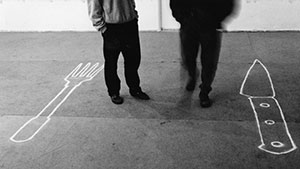
Poznan Installation
Katharine Meynell
1993, 2 monitors behind steel grilles, drawings and piles of potatoes
The work addressed issues of order and disorder, consumption and communication, gaps, lack of understanding, understanding the gaps as significant. Usually ordinary things becoming exceptional – physical things, emotional things, things to consume and things which are consuming, at once both abstract and tangible. I drew in colour on walls and in salt on floors, to later be whitewashed out and swept clear. The new video, shot in Poland, made with new friends and Polish delicacies, forced gaps of communication in between electronic noise.
Exhibition at the International Artists’ Centre, Poznan
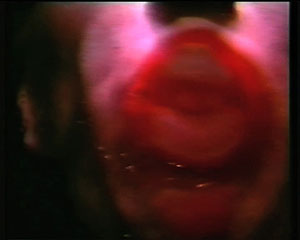
Vampire S Eat
Katharine Meynell
1992, LCD screen, chair
‘Vampire S Eat comprises a single LCD screen embedded into the cushion of a chair, the image and sound of a licking tongue slurping against the glass conjuring up horrors. It benefits from humour and simplicity, playing against the functional intentions of the chair.’ – Chris Meigh-Andrews
Exhibition at Kettles Yard, Cambridge, Bluecoat, Liverpool, Pullitt X, London, Film Museum, Amsterdam.
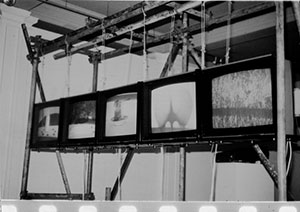
Eat
Katharine Meynell
1992 video installation, 5 monitors, 1 projector and 6 players
“A large projection onto the plaster wall of a gallery creates an electronic fresco. The image is a still life, a table obliquely suggesting a Last Supper formally laid with five places, each an arrangement of food and objects. A child walks across the table, playing with the food. Five monitors are suspended with their backs visible, sound and light spilling out. A single part of a larger still life is placed within the fame of each monitor over which images are enmeshed and overlaid, to form footnotes and subtexts.” Dictionary of British Video Artists.
Exhibition at Kettles Yard, Cambridge, Bluecoat, Liverpool.

Ants and Balls
Katharine Meynell
1990, Installation
A two source installation, monitors to be placed opposite each other in a corridor or other narrow area, so as to pass between them.. Close-up images on an anthill and on a scrotum, nothing moving gently and purposefully.
Shown at Sheffield Media Show.
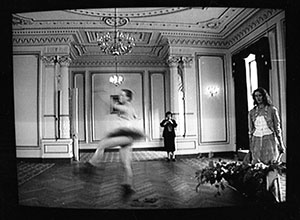
As She Opened Her Eyes She Looked Over Her Shoulder And Saw Someone Passing The Other Side Of The Doorway With A Strange Smile
Katharine Meynell
1990 10mins
A visual narrative of unspoken relationships between three women: reader, dancer and musician. A work that explores a dream space.
Performed by Daniella Nardini
Music composed and played by Janet Beat
Shown on BBC Scotland (commission for 10x10)
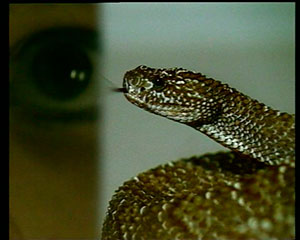
Moonrise
Katharine Meynell
1989, Video wall for Video Positive
Moonrise is a woman's song of desire, invested with fierce and conflicting
emotions.‘Moonrise is a dream-like fable juxtaposing images of air, fire and water with a hermaphrodite juggler and an infant mermaid’ John Wyver
Music composed by Sylvia Hallett
Exhibition at Tate Liverpool, Diarama, London and Cornerhouse, Manchester
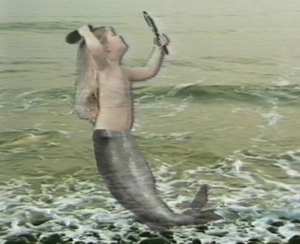
Medusa
Katharine Meynell
1988, 20mins
The tape meshes psychoanalysis, a feminist view of the subjective and raw deadpan humour in a tragic-comic reassessment of the smothering Mother of myth. Taking a mother and daughter’s remembrance the tape explores archetypes. We see Medusa, seduced and abandoned and pregnant with the bastard Pegasus, refusing to yield to her fate.
Music composed by Sylvia Hallett
Shown Ch4/BFI New Directors commission
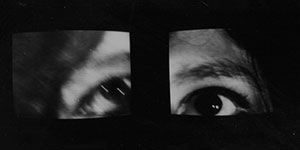
Her Gaze
Katharine Meynell
1988 installation with two monitors
Her Gaze has been developed out of my preoccupation with the myth of Medusa the Gorgon as a contemporary parable of the struggle with patriarchal representation of women; in particular the way women are looked at within dominant media practice.
In the Greek myth Medusa had the ability to turn men and wild beasts to stone by her gaze.
Since making this work in 1988, the debate around the gaze has continued. I, for my part have no theoretical certainties to pose, rather my position is one of an empirical fiction maker. In this way I can suggest the possibility (however surreal or unbelievable), that something different could be articulated.
Shown by Bookworks at The V&A and The National Review of Live Art, Glasgow

Blackstock Estate Tapes
Katharine Meynell
1987, Video, 30mins
The product of Meynell’s work as a video artist on the Blackstock Estate along with the photographer David Hevey on the Barnsbury Estate, Mark Fairnington, a painter, on the Gridlestone Estate and Roger Tondrow on the Hornsey Lane Estate.
Meynell worked on the Blackstock estate teaching local people to use video equipment, make campaign tapes and working with a women’s group and youth club. The project was to promote understanding and enjoyment of the visual arts, to promote participation and to enable local people to develop practical skills. The result of Meynell’s part of the project was a video ‘flickbook’ using three monitors.
Kate Meynell’s video of Blackstock Estate tenants, GROUP PORTRAIT, shows heads, middles and feet on three separate monitors out of synch, so that while one adult face composes itself, one kid’s foot is propped coolly against the wall, or a hand gesticulates with a cigarette. What sounds objectifying is actually warm and participatory, with the children especially using the camera – outstaring it, posing.
Rose Jennings, City Limits, August 1987
Exhibition at Hardware Gallery, Islington. GLA Artist in Residency
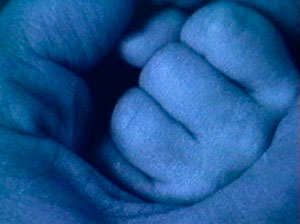
Hannah’s Song
Katharine Meynell
1987, Single screen video, and installation version, 8mins
‘The first community we ever join: mother and baby.’
Hannah’s Song is a two-deck multi-monitor video installation. My daughter first started to sing at four and a half months; this was quite apparent to me however unrecognizable to others. I took her song to Jocelyn Pook who transcribed it for me. Although the rhythm was random the notes were consistent. This is essentially a visual work, in it I have collaged photographs, super 8 and video, of Hannah and the objects and colours that fascinate her.
Exhibition at National Review of Live Art, Bracknell Video Festival, ‘Women Sculptors Today’ Canterbury.
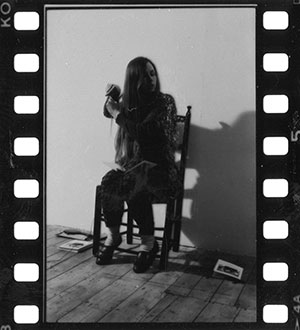
A Book For A Performance
Katharine Meynell
1986, Installation with 2 monitors and books.
A performance in which long hair is ritualistically cropped in front of the camera.
A Book For a Performance is both part of Meynell’s performance and a record of it, serving as a sort of fetish – complete with lock of hair. The performance is one in which long hair is ritualistically cropped in front of the camera.
Exhibition at the AIR Gallery Funded by Arts Council of Great Britain/London Video Arts.

Untitled (Ectopic pregnancy)
Katharine Meynell
1985, Video 11mins
Marion Urch falteringly reads a medical diagnosis, contrasted with other more personalized information.

The Sisters Story
Katharine Meynell
1985, Video, 17mins
A narrative in four parts, each a different facet of the same character.
‘This is my sister’s story, not her story, but my story of her.’
ACGB funded
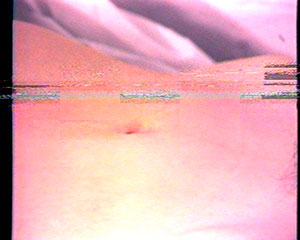
Belly
Katharine Meynell
1983 Installation, tissue paper tent, with a single screen in the ceiling.
The belly moves as the body breathes. Laughing singing (Meredith Monk) and rhythmic breathing (Inuit Katajaiit) accompany the fragmented image, edited at fault to create colour. Student work made in the department of Environmental Media, Royal College of Art.

Momento
Katharine Meynell
1983 Video, 5mins
Is a lament for my aunt, a contemplation of the unremarkable nature of a woman's end of life depression.
Student work made in the department of Environmental Media, Royal College of Art.
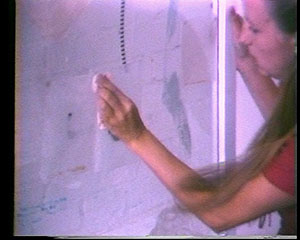
Diary
Katharine Meynell
1983 Video, 10mins
A documentary of an installation being dismantled, (nowhere to put it as it wouldn’t fit through the front door) after working on it over two years. The voice over is a conversation I had with Maggie Warwick, who had been operating the camera, about some of the concerns within the work.
Diary installation was a sheet of glass 8ftx5ft onto which, in a central space, projected slides of pubic hair rose and fell in water, animating as the images dissolved in and out of each other. The word sensuality has been written over and over in this square, a pattern no longer readable. This acted as a potential back projection screen. As the projection was a diary it was always ‘in progress’.
Student work made in the department of Environmental Media, Royal College of Art.

RCA Women's Group
Katharine Meynell
1983 Video, 20mins
A short documentaryß of the Women's Group. Student work made in the department of Environmental Media, Royal College of Art.

She Talks To Herself Often
Katharine Meynell
1981, 16mm film, 6mins
Landscapes in black and white and colour domestic vignettes, with an internal monologue as voice over “she talks to herself often, especially when she is alone in bed, it is a two part conversation, she takes her own part twice...”
Student work made in the department of Environmental Media, Royal College of Art

Housework
Katharine Meynell
1980, Video and slide tape versions, 20mins
Looking at the Domestic work done by four women.
Student work made in the department of Environmental Media, Royal College of Art.
